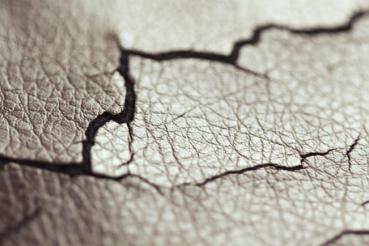While skin cancer is more common in people with lighter skin, it can also affect people with dark skin — and it’s often found in later stages when it’s harder to treat.
“Skin cancer affects people of all skin types," says Vidya Shivakumar, MD, a dermatologist at RUSH MD Anderson Cancer Center. “In people with dark skin, including Black and South Asian people, squamous cell carcinoma is the most common type of skin cancer. Hispanic and other Asian populations most commonly develop basal cell carcinoma.”
It’s important for people of any skin color to take skin cancer seriously and know how to reduce their risks. Here are some words of advice for people with darker skin.
1. Other medical conditions or treatments can increase your risk
If you have certain chronic conditions, take medications or have had a medical procedure, then you may have a higher risk of getting skin cancer. Some of these factors that increase skin cancer risk include the following:
- Organ transplantation.
- Immunosuppressive medications.
- Albinism, which is a lack of pigment in the skin, eyes and hair.
- Chronic ulcerations.
- Burns.
- Hidradenitis suppurativa, a chronic condition that causes lumps under the skin.
- Chronic inflammatory conditions, such as discoid lupus, lichen planus and lichen sclerosus.
Patients with darker skin should be aware that they can develop skin cancer, particularly squamous cell carcinoma, if they have one of the above conditions.
“In these conditions, skin cancer can develop within the lesions of skin disease itself, which may be in a sun-protected site, such as the genitalia, groin or buttocks,” Shivakumar says. “So, monitoring and skin examinations are important.”
2. Sun protection is important for many people with dark skin
Although skin cancer isn’t as common in people with darker skin, there are many cases where sun protection is still important.
“Everyone can benefit from sun protection regardless of skin type,” Shivakumar says. “Sun protection can slow premature skin aging, improve pigmentary conditions such as melasma and reduce the risk of skin cancer.”
Those with certain medical conditions, including a suppressed immune system, a history of organ transplantation or albinism, are at higher risk and should use sun protection. It is also recommended for people of color who may have lighter skin tones or a family history of skin cancer.
Sunscreen, sun protective clothing and sun avoidance, particularly between 10 a.m. and 4 p.m., are important for skin cancer prevention.
When you are out in the sunshine, Shivakumar recommends using a broad spectrum sunscreen of at least. You’ll also need to reapply it every two hours throughout the day or more if you’re swimming or sweating.
“To achieve the protection as advertised on sunscreen, the amount of sunscreen applied must be sufficient,” Shivakumar says. “For the face, the standard amount is about a quarter teaspoon.”
3. People with darker skin have a lower melanoma survival rate
Even though people with lighter skin are at higher risk, people with darker skin have a lower survival rate for certain types of skin cancer.
There are many possible reasons for this, including unequal access to health care and screenings or lower awareness for rarer conditions.
Melanoma, which is the most concerning skin cancer, tends to be diagnosed at a later stage in people with darker skin, which leads to more morbidity and mortality.
"For melanoma, higher mortality rates may be partially due to a ‘low index of suspicion,’ as both patients and clinicians may think of skin cancer as being less common in people with skin of color,” Shivakumar says.
Melanoma also often presents differently in people with darker skin than in people with lighter skin.
“In people with skin of color, melanoma most commonly develops on non-sun exposed areas, such as the palms of the hands and soles of the feet,” Shivakumar says. “Melanomas in these locations are also known to be more aggressive and less responsive to treatment."
It’s important to see a dermatologist as soon as possible if you see signs of melanoma.
4. Getting to know your skin helps catch problems early
Checking your skin for anything unusual can help you spot skin cancer early and get treatment. You may also want to have a partner check you if possible.
Dermatologists recommend examining your skin often so you can establish a baseline for what’s normal for you. Once you have that baseline, you’ll be able to recognize anything out of the ordinary.
“Patients with skin of color should pay particular attention to lesions on the hands, feet or nails where skin cancer might be overlooked,” Shivakumar says. “Skin cancer on these areas is more common in people with darker skin.”
When you examine yourself, make sure to take note of the following:
- Moles that are larger than the width of a pencil eraser.
- Asymmetrical moles.
- Moles with irregular borders.
- Moles that have multiple colors.
- Moles that change in size or color, become raised or develop an open sore.
- Sores or lesions that don’t heal.
- Dark streaks on the fingernails or toenails.
Any of these can be signs of skin cancer, so see a dermatologist if you spot them.
Keep in mind that a dark line under your fingernails doesn’t necessarily mean you have skin cancer.
"A dark line on a fingernail doesn’t always mean melanoma,” Shivakumar says. “People with darker skin can naturally have multiple benign, dark bands on their fingernails. But because nail melanoma is more common in individuals with skin of color and usually diagnosed at a later stage than melanoma of the skin, vigilance is important.”
Shivakumar recommends getting these bands checked by a dermatologist. They can note if there are any changes in color or size of these bands.
"In addition, bands associated with a growth under the fingernail, nail splitting, lifting, pain or bleeding should also be evaluated by a dermatologist promptly,” Shivakumar says.
5. Awareness can save lives
Because skin cancer isn’t as common in people with darker skin, it doesn’t get as much attention. When skin cancer is finally found, it can be at later stages when it is more difficult to treat.
Dermatologists say more awareness can lead to earlier detection and, hopefully, better results for patients and more lives saved. Being aware that patients with darker skin can develop skin cancer and knowing whether they are at greater risk due to an underlying condition is a great start.
“Awareness by both patients and clinicians about how skin cancer presents in individuals with skin of color, as well as risk factors for the development of skin cancer, is important,” Shivakumar says. “Those who are at risk or have suspicious lesions should see a dermatologist for a baseline exam.”
If you find signs of skin cancer on your body or need a routine skin check, call Rush at (888) 352-7874 to schedule an appointment with a dermatologist.




